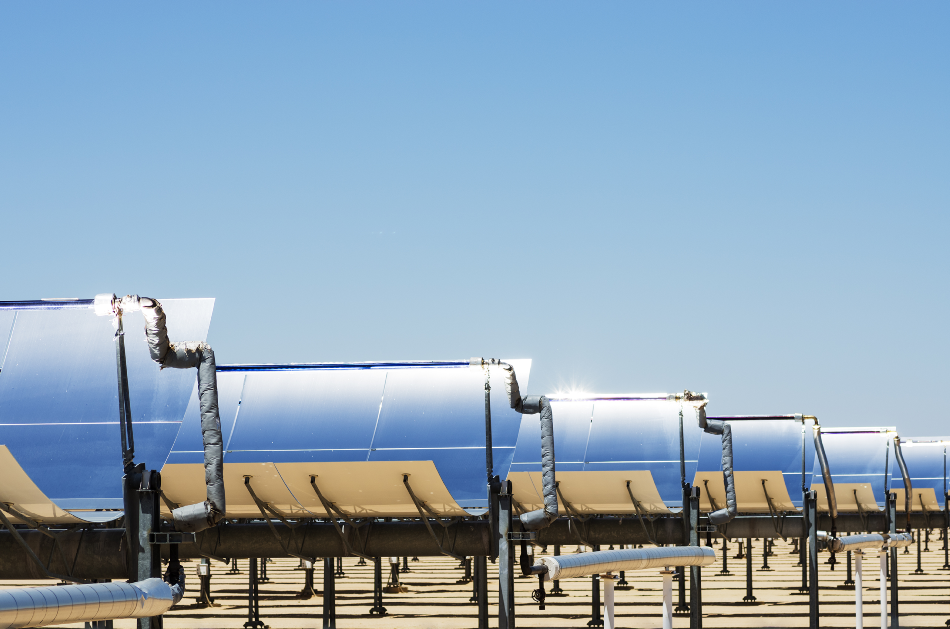
Tom Grundy / Shutterstock
Solar power is an alternative energy source that acquires its electricity from sunlight. As a prominent source of renewable energy, solar power is described as either active or passive solar power, which is determined by the acquisition and distribution of solar energy.
Passive solar techniques usually involve construction orientation towards sunlight and building with light-dispersing or heat-trapping materials. On the contrary, active solar techniques use concentrated solar power and solar water heating to catch the energy, as well as operate photovoltaic systems.
The two types of solar power are solar thermal and solar panels, also known as solar photovoltaic - both absorb available energy from the sun and convert that raw energy into usable energy. However, the main difference parting these two is that solar panels, or PV systems, generate electricity, while thermal systems are used to heat water or air.
Both Solar Powers and Their Differences
As an alternative energy source, solar power exists as the transformation of energy from sunlight to electricity through concentrated solar power or PV (photovoltaics), and sometimes both. Concentrated solar power systems, also known as CSP or concentrated solar thermal systems, create solar power with lenses or mirrors. Both lenses and mirrors are capable of collecting a substantial amount of sunlight and generating it into electricity, which converts to heat - this heat is the catalyst to a steam turbine, an important part of electrical power generators.
In the 1980s, the world began to see commercially concentrated solar power plants. Photovoltaics were introduced as a limited, or small source of electricity, this was applied to tools such as calculators or solar-powered bike locks.
Solar power that merges both concentrated solar power and photovoltaics is known as a hybrid system. A hybrid system combines the two energy sources or uses diesel and biogas to form a middle ground between energy efficient sources and non-renewable fuel. The following are hybrid energy sources: CPVT system, PV-thermoelectric system, PVT system, CPV/CSP system, PV diesel system, and the ISCC system.
The CPVT system is a hybrid of concentrated photovoltaics and a solar thermal collector; it transforms solar radiation into thermal/electrical energy by combining solar modules with a solar thermal collector. With the use of solar cells, PV-thermoelectric systems turn a temperature difference between varying materials into electricity. CPV/CSP devices are a hybrid that merges non-PV technology and concentrated photovoltaics in order to generate concentrated solar thermal. Lastly, PV diesel system and ISCC systems combine photovoltaic systems with a diesel generator, and concentrated solar power with a gas turbine, respectively.
The Difference: Summarized
Photovoltaics employ semi-conductor technology and devices to turn sunlight directly into electricity. Since this is a direct process, sunlight is always needed for this energy source to operate and cannot work independently. However, solar thermal operates by using mirrors and lenses to concentrate sunlight and then to generate heat, rather than electricity. The concentration of sunlight produces a heat source that can be used in water or air heating. Solar thermal energy primarily produces heat, so it is capable of storing this concentrated heat - essentially making it an independent source of energy.
Conclusion
The cost difference between solar thermal energy and solar panel, or photovoltaic energy, is minuscule - the more often photovoltaic systems and devices are built at a utility-scale, the more affordable they are expected to become. Despite this affordability, solar thermal powers still pose the benefit of storing power for long amounts of time. The substantial differences between the two types of solar power are disputable, and neither exists as more energy or cost-efficient than the other.
Sources
Disclaimer: The views expressed here are those of the author expressed in their private capacity and do not necessarily represent the views of AZoM.com Limited T/A AZoNetwork the owner and operator of this website. This disclaimer forms part of the Terms and conditions of use of this website.